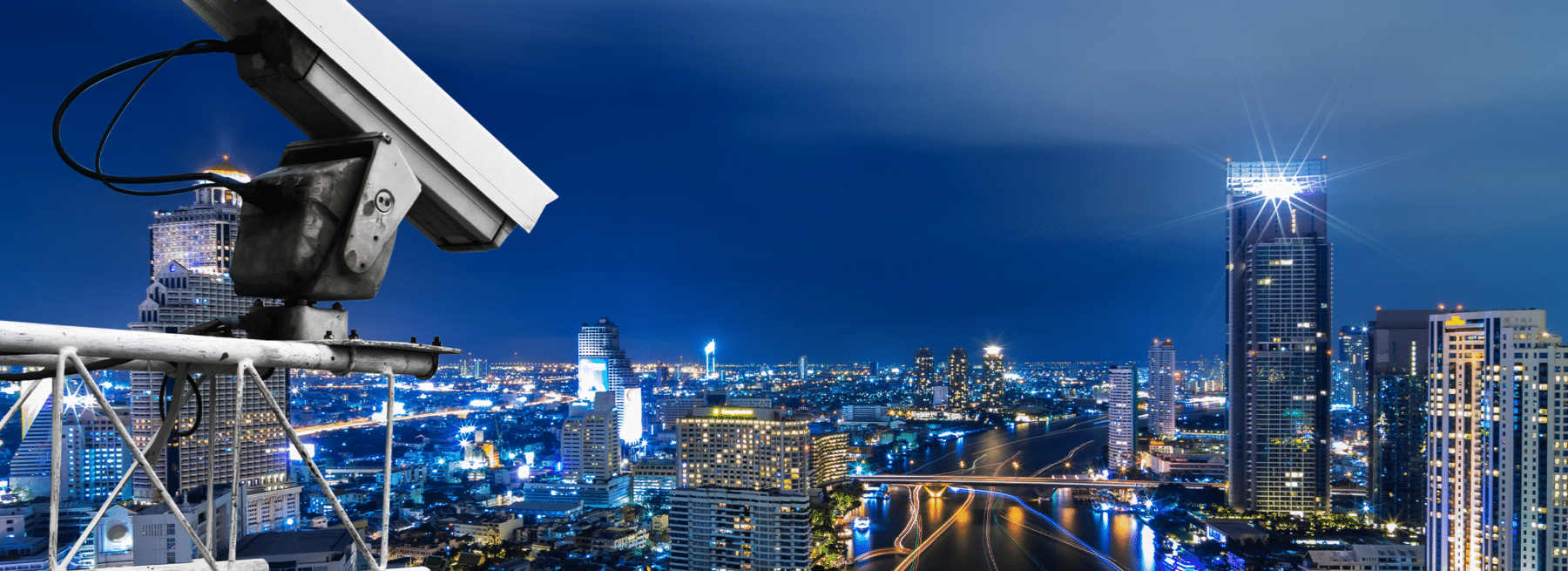What’s in your company’s physical security strategy? How often do you review it to ensure it’s current? Has your security strategy been updated in the past year? It’s time to revisit now. Don’t have a security strategy? Then, create one ASAP.
It doesn’t matter what business you are in. Everyone needs to review their physical security strategy at least once a year. Here are the reasons why.
Why It’s Time to Review Your Security Strategy
Every company needs to do a review of its security strategy. Here’s one reason why that affects all businesses.
Current events
The supply chain woes and inflation have a huge impact on operations. When the economy starts tanking, crime starts climbing. Since the 1950s, crime went up every single time a recession hit according to a Reuters article.
Moreover, Richard Rosenfeld and Matt Vogel’s Homicide, Acquisitive Crime, and Inflation: A City-Level Longitudinal Analysis show the effects of inflation on crime. This is what is happening in the world today and the numbers back that up. With the average price of goods jumping by almost 9% in the U.S., it’s the highest increase in 41 years per the U.S. Bureau of Labor Statistics Consumer Price Index. As a comparison, inflation usually goes up by just 2% every year.
Yes, everyone is tired of hearing about inflation and broken supply chains. Nonetheless, this reminder will help prevent your company from resting on its laurels and becoming complacent.
Increasing crime rates affect all industries
It doesn’t matter what industry you’re in. No single industry is unaffected by the surge in crime. These crime statistics for different industries support this.
The biggest cause of the increase of crime in the construction, scrap metal, and recycling industries is the mounting costs of precious metals, lumber, and other materials. The price of equipment and tools has also soared.
What makes today’s situation different from a decade or two ago is that criminals have a big market that allows them to sell stolen items without getting caught. They go to online marketplaces like Facebook and Craigslist and pawn shops that don’t ask questions. Finding and recovering these stolen items is almost impossible.
The retail industry is struggling too. On the state of national retail security and organized retail crime, the National Retail Federation (NRF) report shows the pandemic still wallops the retail industry. Retail risks have grown more expensive and complicated. They’ve also been dealing with the growth of the average loss per robbery and shoplifting incident.
“The increasingly risky environment has repercussions that extend well beyond a company’s bottom line into actual threats against employees and customers,” says the NRF report.
Vehicle theft is also on the rise. Insurance Information Institute (III) discloses that there have been 246 vehicles per 100,000 people stolen in 2021. Auto theft rocketed in early 2022 with 12,569 compared to the same period in 2021 at 6,692 as reported by Car and Driver. Vehicle theft went up by 48% over the past decade according to SafeHome.org research.
It’s not just the mounting crime rates that are a problem. There’s an increase in violent crimes as lawbreakers have become more audacious. Violent crimes have leaped from 5% to 40% compared to the same time frame in 2021 per a FOX News analysis of major cities.
Lawn equipment theft is a serious problem as inflation drives up the cost of replacement and rental equipment. WNEP and Cleveland.com verify equipment costs 10% more. Cargo theft yields a boatload of money for crooks and organized crime gangs. Hence, cargo theft occurs in many industries.
Warehouse and storage facilities are contending with cargo theft. Sensitech’s U.S. Cargo Theft Report shows the average loss value per cargo theft incident during the third quarter of 2021 was $337,000. The message is clear. Crime touches every industry. Therefore, a security plan needs to be revised to address these problems.
Changing business operations
Just about every business had to pivot after the pandemic. With more people doing business online, businesses had to tweak their processes to go where their customers went. Additionally, there is a connection between cybersecurity and physical security. It’s due to connected devices that provide physical security such as security cameras. Criminals can use these connected devices to access a company’s assets.
Norton reports data from IoT Analytics shows the market will have more than 11 billion Internet of Things (IoT) devices. These connected devices that may be responsible for physical security can be hacked. Thus, cyber threats are physical security threats.
For example, video surveillance provides physical security. A hacker may attempt to access video security cameras and block operators from monitoring what’s happening at a business. They can do a lot of damage without going into a server room by hacking from an onsite computer.
Hackers can search for employee computers, especially in specific departments such as human resources and finance. These may have sensitive information about personnel and customers as well as finance-related information. Many technologies think if you’re physically at a computer workstation, then it must be OK to let you in.
In short, bad actors are taking advantage of vulnerabilities in physical security to do a cyberattack. Companies that don’t plan and prepare for this possibility could pay a high price that costs more than cash. Such incidents can affect the company’s reputation and customer loyalty. That’s why cybersecurity and physical security intersect.
Besides, security technologies continue to evolve. What worked five years ago may be outdated today. The older video cameras may not be able to detect faces and other identifying information. Today’s video surveillance and security cameras can do that when you invest in the right technologies.
A Better Way to Secure Your Business
Many traditional security solutions don’t do anything until after a crime has already taken place. Fortunately, a solution exists that offers multiple layers of security, works well as part of the convergence between physical security and cybersecurity, and delivers other business benefits. This technology is video surveillance with remote monitoring. It is a proactive security technology that can help deter crime.
Video cameras can be a psychological deterrent to criminal activity. After implementing surveillance with monitoring, post “Area under surveillance” signs around the business. This stops some trespassers, but not all of them. Also, security cameras should not work alone. It could become a liability issue if no one watches the cameras.
When you opt for technology that combines video analytics and human monitoring operators, it can increase the accuracy of catching something suspicious before anything happens. Video surveillance with remote monitoring can see, record, and help deter incidents in real-time.
The monitoring operator and video analytics can help catch intruders trying to break in or gain unauthorized access. A company like Stealth has trained operators who can notice things like this and follow your protocols to help avert a potential crime.
While many cyberattacks occur without the criminal stepping into the building, many crooks still prefer to do a physical break-in. All too often, leaders tend to focus on investing their budget into IT security while neglecting physical security. Both need equal attention. If either is weak, criminals could use it to their advantage.
Considering cyber threats are physical threats, you want to verify the security company inspects all their cameras and other products they use for remote video surveillance before you start working with them.
In working with experienced companies like Stealth, you’re working with a company that has its own processes in place to verify and protect the integrity of its systems. As you interview potential security partners, ask about their security strategy and how they confirm their cameras, access systems, and software remain clean and free of security exploits. Ask security vendors about the process they follow to check the security of their technology.
How to Find the Right Video Surveillance Company
Not every remote video surveillance vendor is qualified to protect your business. Some security companies use more cameras than you need to drive up the cost. The first place to look is for security companies that have experience in your industry. They know how to design a layout to use the fewest number of cameras while ensuring maximum coverage.
Many places across North America have been contending with natural disasters. It doesn’t take much to knock a security camera out of commission. There are video surveillance systems that can stay put. Nonetheless, the reality is technology breaks. Any security vendor who tells you their technology never breaks is not telling the truth.
Some security companies include system health checks to monitor for problems. These run regularly to check the system and whether it’s functional. The last thing you need is for the cameras to stop working when a crime occurs and have no proof of what happened.
System health checks analyze the security cameras, hard drives, and other equipment. People take their cars in for servicing and inspections to ensure they are still safe and continue running. That’s what system health check does for video surveillance systems. The process looks for any problems related to power, networking, wireless, and camera outages. Often, these can be fixed remotely without the security consultant coming to your property.
Here’s a list of questions to ask a video surveillance company to help you choose the right one. If you’d like to learn more, browse this website and check out these videos catching crooks in action and preventing damage. For more information about remote video surveillance and business-grade security solutions, please contact us.

